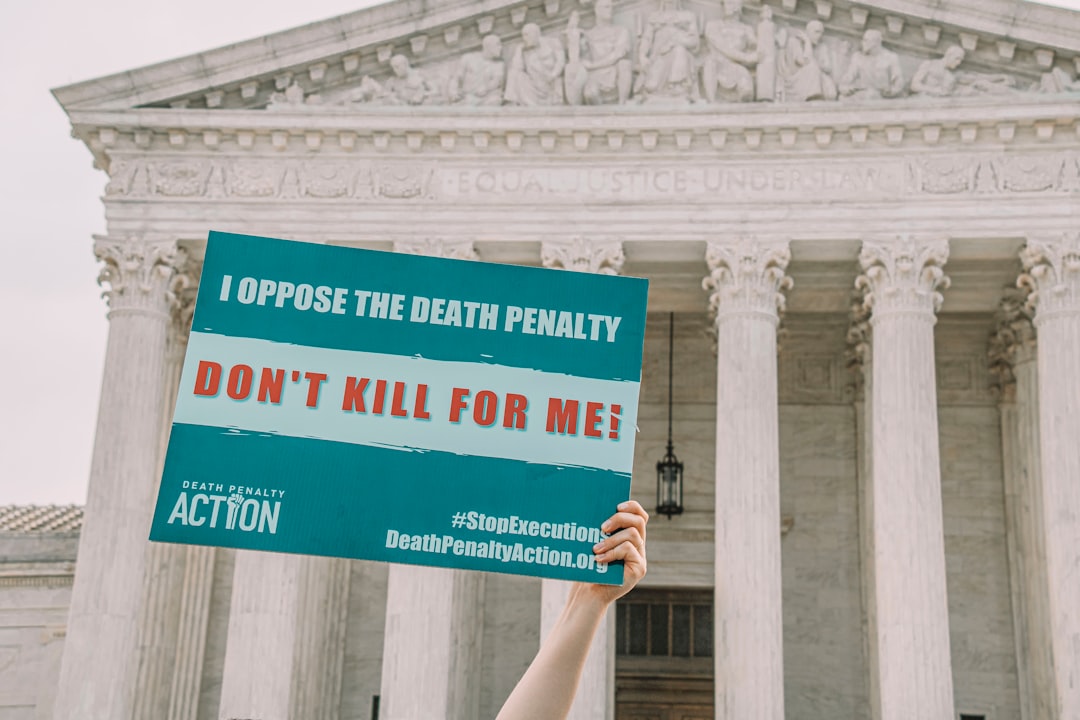BY ZACH KAHN
UNITED STATES — Anthony Boyd’s nitrogen gas execution lasted over 20 minutes. He gasped 225 times. He maintained his innocence until the end.
In 1995, Anthony Boyd was sentenced to death for his role in the 1993 murder of Gregory Huguley.
He was convicted after his co-defendant, Dwinaune Cox, struck a deal with prosecutors to testify against him in exchange for a sentence that would allow him to eventually walk free on parole.
No physical evidence connected him to the murder.
When Boyd presented his defence, his court-appointed lawyer said that he had little time to prepare for the case and failed to call witnesses to validate Anthony’s alibi.
Shortly after being sentenced to death, he tearfully told The Anniston Star: “I’ll maintain my innocence until the day I die, which I guess will be in the electric chair.”
Lauren Gill’s article for Bolts Magazine, titled “He Was Convicted Entirely On Clashing Eyewitness Testimony. Alabama Plans to Execute Him Next Week,” highlighted his case.
“Take out your phone, go to the clock app, and find the stopwatch. Click start. Now watch the seconds as they climb. Three seconds come and go in a blink. At the thirty-second mark, your mind starts to wander. One minute passes, and you begin to think that this is taking a long time. Two . . . three . . . . The clock ticks on. Then, finally, you make it to four minutes. Hit stop. Now imagine for that entire time, you are suffocating. You want to breathe; you have to breathe. But you are strapped to a gurney with a mask on your face pumping your lungs with nitrogen gas.
Your mind knows that the gas will kill you. But your body keeps telling you to breathe. That is what awaits Anthony Boyd tonight. For two to four minutes, Boyd will remain conscious while the State of Alabama kills him in this way. When the gas starts flowing, he will immediately convulse. He will gasp for air.
And he will thrash violently against the restraints holding him in place as he experiences this intense psychological torment until he finally loses consciousness. Just short of twenty minutes later, Boyd will be declared dead. Boyd asks for the barest form of mercy: to die by firing squad, which would kill him in seconds, rather than by a torturous suffocation lasting up to four minutes.
The [US] Constitution would grant him that grace. My colleagues do not. This Court thus turns its back on Boyd and on the Eighth Amendment’s guarantee against cruel and unusual punishment. Because the Court should have instead granted a stay of execution and Boyd’s petition for certiorari, I respectfully dissent.”
– Justice Sonia Sotomayor, in her dissenting opinion from the denial of application for stay and denial of certiorari for Anthony Boyd
At 5:55, a guard appeared to check for leaks in the gas mask’s seal. Just after, another guard’s radio squawked, and the process lurched forward.
Rev. Jeff Hood, Boyd’s spiritual advisor, stepped toward Boyd from the corner of the chamber just a few feet away and held the condemned man’s hand. Hood, a slim, bald, bearded man wearing glasses and a suit over his religious frock, drew the sign of the cross in the air above Boyd.
Around that time, Hood began to move back toward the wall but stopped. He appeared surprised and moved back toward Boyd. One journalist stood up to attempt to see around Hood, who was now standing between Boyd and the witness glass.
“Ma’am, we need you to have a seat,” a guard said.
She complied, a “stay seated and quiet” sign—a car tag from the prison’s license plate facility—mounted in the concrete wall above her head.
Hood opened his Bible at Boyd’s side and appeared to begin reading aloud.
Around 5:57, as Hood continued to read, Boyd began to violently react, thrashing against his restraints. His eyes rolled back, leaving only their whites, the colour of the sheet. Boyd continued to convulse for at least a minute, shaking back and forth and lifting his legs from the gurney.
By 6:00, Boyd’s movement had slowed. Hood signed the cross once again.
Around 6:01, Hood moved back toward the wall, and a prison guard leaned down over Boyd for several seconds. Boyd was still visibly moving during what may have been a consciousness check.
Around that time, Boyd began a series of deep, agonised breaths that lasted for more than 15 minutes, each breath shuddering Boyd’s restrained head and neck.
One gasp after another. Minute after minute. You could hear reporters begin marking the breaths in their notes, the pencil scribbles audible in the air.
Gasp. Scribble. Gasp. Scribble.
After about 75 gasps, Boyd’s brother sighed deeply.
Then he broke the silence in the witness room, disobeying the crude directive posted overhead.
“It’s like he’s gasping for air,” Boyd’s brother said, shaking his head.
The gasping continued for nearly 10 minutes, breath after breath after breath.
6:09. 6:10. 6:11. A small digital clock on the wall above Boyd counts the seconds.
By 6:12, Boyd’s gasps become shallower but increase in pace. Around 6:15, he exhaled, and his head tilted to the side, away from media witnesses.
At 6:16, Boyd drew another deep breath. Hood once again signed the cross.
Beginning around 6:17, Boyd’s movement was limited. There appeared to be no movement after around 6:20.
Then, minute after minute, the witnesses watched as Boyd lay on the gurney motionless. Boyd’s brother put his head in his hands.
Around 6:27, the correctional officers, expressionless, closed the brown-blue curtains. The state’s performance was over.
Minutes later, a prison spokeswoman said Boyd’s official time of death was 6:33 p.m.
-Excerpt from Lee Hedgepeth’s article: “After justices warned of prolonged suffocation, Alabama subjected Anthony Boyd to the longest nitrogen execution in U.S. history.”
Jeff Hood, the spiritual advisor mentioned in the above excerpt, said after the execution that he believes that Boyd was conscious for at least 16 minutes, which is four times the length Justice Sotomayor mentioned in her dissent.
Hedgepeth also mentioned that Boyd gasped for air over 225 times.
In his final words, Boyd said:
“I just wanna say again, I didn’t kill anybody, I didn’t participate in killing anybody. Just want everyone to know, there is no justice in this state. There can be no justice until we change this system. Let’s get it.”
There is a fair chance that an innocent man was tortured to death last night.
Imagine how Anthony Boyd felt yesterday.
Imagine being strapped down to a gurney and helplessly suffocating to death. Imagine seeing people just stand there and watch you suffer.
Imagine fighting to survive with your lungs on fire, your face wet with tears, and your heart pounding so fast that it’s all you can hear.
Imagine gasping 225 times, knowing with each gasp that this is how your life ends because somebody believes that you did something that you did not actually do.
Imagine feeling guilty for the heartbreak endured by your family.
Imagine the guilt that follows for the pain of your loved ones. Imagine realising that your daughter, whose birthday was today, will forever associate it with your shallow, painful, desperate last gasp.
No words will be able to describe the horror Boyd—and his family—endured yesterday.
Yesterday’s execution was not justice; instead, it was state-sanctioned cruelty.
The UDHR states that: “human beings are inviolable. Every human being shall be entitled to respect for his life and the physical and moral integrity of his person.”
The Eighth Amendment to the US Constitution prohibits “cruel and unusual punishment.”
“Both of us were violated in the chamber.”
The death penalty must end.
Zach Kahn is a US teenager working to become a bona fide journalist from the United States. He is our US correspondent. His work is republished with permission.
You can follow Zach on substack here.






























